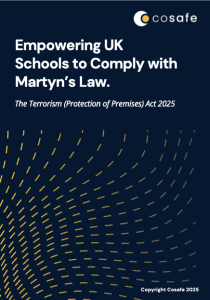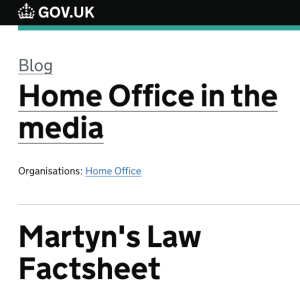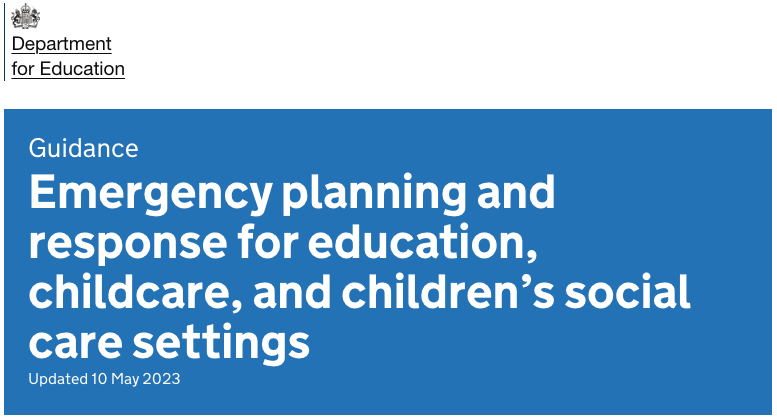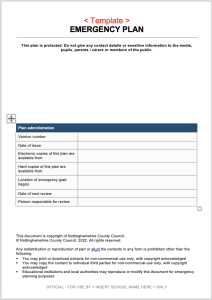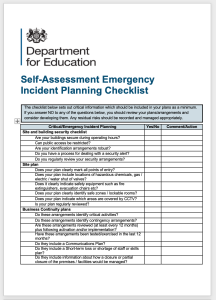Emergency Planning and Lockdown Compliance
Helping organisations comply with Martins Law
(Officially the Counter Terrorism (Protection of Premises) Act 2025)
and DFE Guidance for Schools.
Any venue that expects over 200 people on site is now subject to the Counter Terrorism (Protection of Premises) Act 2025. This includes schools. The DFE has also published guidance and checklists helping schools with their emergency planning and response. This page outlines the regulations for schools and explains how Cosafe is uniquely positioned to help. The concepts extend to other businesses and organisations.
Martyns Law
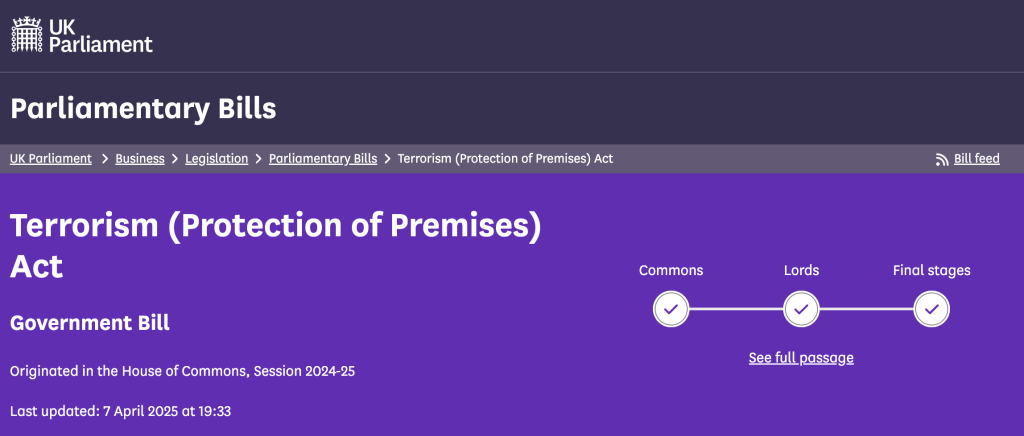
In 2025, the UK enacted the Terrorism (Protection of Premises) Act (colloquially Martyn’s Law) to strengthen security at public venues in the wake of recent terror attacks. The law is designed to “improve protective security and organisational preparedness” by requiring those in charge of certain premises to consider how they would respond to a terrorist attack.
It establishes a tiered system of duties based on venue size.
Standard Duty venues (the category most schools fall under) are typically those expecting 200–799 people on site.
Notably, primary, secondary, and further education premises are explicitly kept in the Standard Tier regardless of capacity, recognizing that schools already maintain safety procedures like lockdown and evacuation drills.)
Enhanced Duty premises and qualifying events are premises or events where it is reasonable to expect that 800 or more individuals (including staff numbers) may be present on the premises at least occasionally or attend the event at the same time.
Under Martyn’s Law, Standard Duty organisations now face two core legal obligations:
- Register the Premises with the Regulator: The responsible person (e.g. the head teacher or school management) must notify the Security Industry Authority (SIA) that their school is a venue in scope of the Act. The SIA has been appointed as the regulator to advise, support, and ensure compliance with Martyn’s Law requirements across the UK.
- Implement “Public Protection Procedures”: Schools must have in place – so far as reasonably practicable – appropriate plans and procedures to protect staff, pupils, and visitors in the event of a terror incident.
These procedures should be simple, practical steps that “may be expected to reduce the risk of physical harm” if an attack occurs on the premises or nearby. Martyn’s Law explicitly lists the key scenarios that must be addressed:
- Evacuation (orderly moving of people from the premises or building)
- Invacuation (moving people to a safe indoor area)
- Lock down ( immediate shelter in secure locations within the building)
- Communication (communicating with individuals on the premises during an incident)
In other words, every school needs a clear plan for swiftly getting people out, bringing them in / sheltering, securing doors, and alerting everyone on site when faced with a potential attack.
Importantly, these Standard Duty requirements are meant to be low-cost and non-technical – “there is no requirement to put in place physical measures” like new building modifications. The emphasis is on robust procedures and staff preparedness rather than expensive equipment.
What does this mean for UK schools?
Essentially, school leaders must ensure their emergency plans for terror threats are documented, communicated to staff, and ready to deploy at a moment’s notice. (The DFE issues guidance on Emergency Planning and response for Education, and help with planning checklists.)
The aim is to make sure “staff are prepared to respond” effectively under duress – for example in schools, that every teacher knows how to initiate a lockdown or call for an evacuation, and that there is a reliable way to notify all staff and students immediately. While many schools already have fire drills and lockdown policies, Martyn’s Law formalizes and standardizes this across all institutions, with the SIA empowered to enforce compliance (through inspections, notices, and fines for serious breaches). In this context, having the right tools to execute and coordinate these security procedures is crucial.
For further information and information on how the Cosafe critical communication and incident management platform helps schools meet their obligations please download our Martyn’s Law Guide below.
DFE Guidance
Emergency Planning and response for Education
The guidance helps schools plan for, and respond to emergencies and urges them to make emergency plans which explain how they would respond in the event of that any temporary action were needed in the event of an emergency.
The guidance says the plans should be generic enough to cover a range of potential incidents which could happen during, and outside, normal school hours including weekends and holidays.
Potential Incidents
- Public health incidents
- Severe weather
- Serious injury
- Fire risk and any hazards
- Significant damage to buildings
- Criminal activity
- Loss of power or telecommunications
- Disruption to normal services
- Cyber incident or data breach
- Disaster in the local community
Times and Locations
- During normal hours
- Out of Normal Hours
- Weekends Holidays
- In wraparound provision
- school breakfast clubs
- after-school clubs
- holiday activities
- On trips and outings
- During open days, and taster days
- In live performances with an audience
Things to cover
- Roles and responsibilities
- Key Contacts
- When and how to get advice
- The steps you might take in the event of an emergency
- The actions you’d take to enact them quickly
- Educational Continuity
- Parental / Student communication strategyf
- how to respond if advice were not accepted
Ongoing Process
- Awareness
- Risk assessment
- Contingency planning
- Staff training
- Exercises and tests (for example, fire drills)
- Reviewing protocols and communication
- Coordination and planning with relevant bodies.
